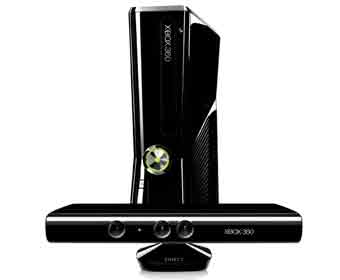Does this year’s CES mark the beginning of the end for the traditional TV remote? It is hard to say for sure of course but there certainly does seem to be a real push from TV manufacturers to move away from the traditional remote or offer additional ways for users to interact with their TVs. So far I have come across four different ways in which manufacturers are developing new methods of user interaction with the TV that in the long term at least will either make an actual physical product a thing of the past or unrecognizable.
January 12, 2012

By Andrew Ladbrook
Does this year’s CES mark the beginning of the end for the traditional TV remote? It is hard to say for sure of course but there certainly does seem to be a real push from TV manufacturers to move away from the traditional remote or offer additional ways for users to interact with their TVs. So far I have come across four different ways in which manufacturers are developing new methods of user interaction with the TV that in the long term at least will either make an actual physical product a thing of the past or unrecognizable.
Perhaps one of the most interesting is motion control. Here TV manufacturers have been very overt about taking the ideas of games console controllers and adopting them for the TV. For its high end TVs this year Samsung is including voice and motion control functionality very reminiscent of the Microsoft’s Kinect controller. What Samsung is offering is limited in comparison but nevertheless impressive, in the demo I saw the motion control worked very well but it does not look ready to completely replace the traditional remote just yet. It also seemed to require for users arms to be in the air for extended periods of time, so it may make for a good work out as users watch the TV. LG’s magic wand is now in its second year and as the Samsung TVs are similar to Kinect so it acts in a similar way to Nintendo’s Wii mote. Users point and click at the areas on the screen they wish to interact this seems ideal in the world of the smart TV where a vast number of options must be navigated and the traditional up, down, left, right is too cumbersome.
Voice control is also prevalent. Again both Samsung and LG seem to be the vanguard in this regard. But again the interactions users can have with the TV are limited. I personally am always a bit suspect about voice control, I have bad experiences with the Kinect in my house which has on occasion taking its instructions from the video playing, this has resulted in certain parts of some movies always rewinding if the Kinect is on. And there is the issue of wanting to hear what is being said on my TV which is negated by voice commands.
Apps that allow for Smartphones and tablets to act as TV remotes have been around for some time, but this year they seem to have become far more sophisticated than last’s apps. Control via this method is easy, but as yet not always without its frustrations. Interestingly these remotes also tend to rely on wifi rather than Bluetooth.
Last and by all means least is the keyboard which remains at the heart of the Google TV service and remains the best way to navigate to different pages on a web browser. Whilst these keyboards do look much better than last year’s, Sony in particular seems to have vastly improved its offering, they are likely to still only have a very limited role in the general TV experience.
To say that TV interaction is going to go down only one of these paths is probably wrong, and I suspect we will see motion control, voice control and control via a smartphone app all developed substantially. And that these new methods of interaction may be the means by which the potential of Smart TVs is unlocked.
You May Also Like






.png?width=300&auto=webp&quality=80&disable=upscale)


_1.jpg?width=300&auto=webp&quality=80&disable=upscale)


.png?width=800&auto=webp&quality=80&disable=upscale)